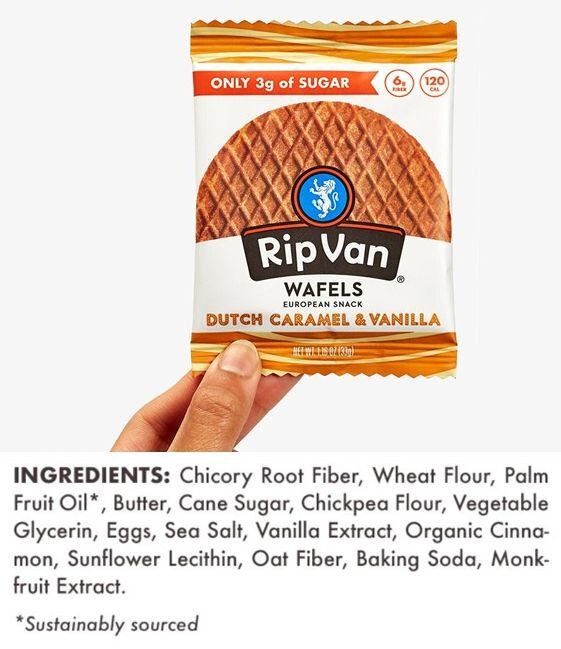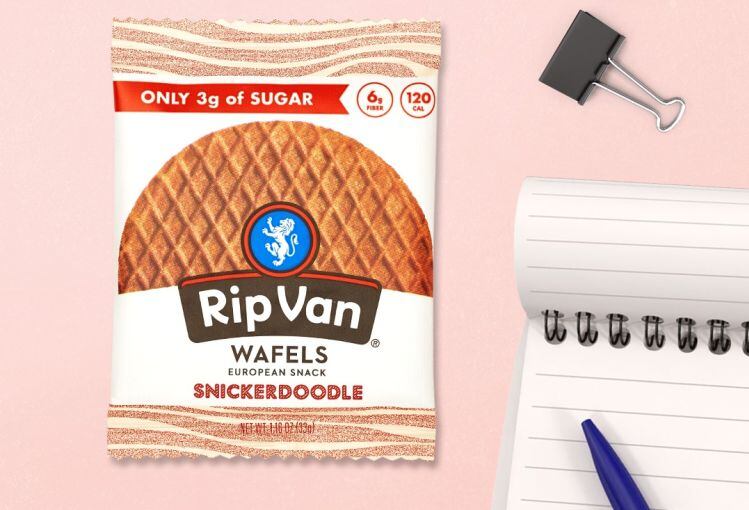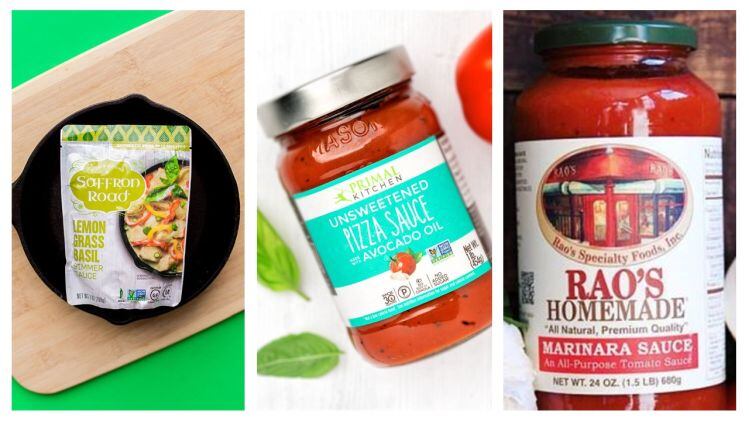In some respects, the Dutch-style wafel – while new to many Americans – had the hallmarks of a winning CPG brand from the beginning.
With no weird or niche ingredients, the Rip Van wafel had mainstream snacking potential: who doesn’t like gooey caramel inside two layers of thin-baked dough? But there was a twist. Pitched as a ‘European snack’ that elevates the coffee experience, Rip Van promised permissible indulgence, with fewer calories, way more fiber, and way less sugar than traditional Dutch stroopwafels.
By way of comparison, a Daelmans stroopwafel (39g) packs in 170 calories, 15g sugar and 0g fiber; while a Rip Van wafel (33g) contains 120 calories, 3g sugar and 6g fiber (prebiotic chicory root fiber is the #1 ingredient).
Permissible indulgence
It’s not a health food, said co-founder Abhishek (Rip) Pruisken - who grew up in Amsterdam consuming stroopwafels - but it’s a “better-for-you alternative to a granola bar or a cookie” that you can enjoy at any time of the day without feeling guilty, especially at a time when more and more people are seeking to create indulgent experiences at home (Rip Van wafels go well with coffee and other hot drinks) but are still watching their sugar/calorie intakes.
“We’ve got an affordable premium positioning similar to a Kind bar or a Chobani yogurt.”

As for Daelmans, he said, “It’s a private company so we don’t know how large they are, but I can tell you hands down that we’re performing better on the velocity front, and we have a much broader reach, from high-end natural food stores to Stop & Shop.”
‘We’re one of the fastest-growing brands on Amazon within grocery’
While Rip Van had a lot of exposure to the foodservice market, which has been badly hit by the pandemic, it has clawed back the initiative in recent months by aggressively focusing on its e-commerce business, both direct to consumer and via platforms from Walmart.com to Amazon, said Pruisken.
The brand – which has raised around $5m to date, not a huge amount given how widely distributed it is - has also launched direct-to-consumer in Canada.
“We’re one of the fastest-growing brands on Amazon within grocery and we’re carefully but strategically expanding our distribution,” said Pruisken, who was speaking to FoodNavigator-USA after launching a new wholesale platform enabling independent retailers, coffee shops, delis and other wholesale customers to order directly through the Rip Van site, with competitive pricing, low order minimums, free shipping and automated subscription capability.
“When you’re dealing with a distributor, you may not know exactly who they are selling to, and now we have direct relationships with these businesses, everything from golf clubs to flower shops.”
Tectonic shifts
Going forward, there is still a lot of runway to grow in multiple channels, said Pruisken, who brought in industry veteran Jim Low (Schuman Cheese, Enjoy Life Foods, Mondelez Intl) as president in late 2019.

“We’d reached the stage of understanding our consumer positioning and shown that the product really does move, so we wanted to scale the business from having spotty distribution in natural and grocery and c-stores to building a machine that would really allow us to scale. And we wanted a traditional CPG general manager that would help us do that.”
The company does not disclose revenues, said Pruisken, “But on a run rate basis we have doubled since last year. But obviously COVID-19 has been insanely hard as a key part of our business went away and we had to basically replace that with online sales.”
When it comes to food e-commerce, he said, “A tectonic shift is happening. If you are savvy at talking to your core consumer, and you’re learning about your highest value customers, the people that buy your product 100 times over the last five years, you can build a market pretty rapidly rather than relying on traditional marketing techniques to build your brand offline.”
He added: “We always ask our super users, if you can’t live without the product, what’s the main reason why? And it’s the combination of taste and low sugar.”

Founded by Marco De Leon and Rip Pruisken almost a decade ago while classmates at Brown University (think waffle irons, dorm rooms), Rip Van makes Dutch-style wafels with a caramel-like filling sandwiched between two layers of thin-baked dough.
Their first customers were fellow students, but before long, they hit breakrooms at Google, Yelp, Uber, Facebook, before capturing the attention of buyers at Peets (2014) and Starbucks (nationwide, Jan 2016).
Today the Rip Van brand is sold online via Amazon, it’s own website and other platforms, and thousands of brick & mortar locations including 12,000 Starbucks stores, Sprouts, Whole Foods, Safeway, Stop & Shop, Giant, Wegmans, independent stores, and several c-store chains, said co-founder Rip Pruisken.
“A big part of the journey is getting people to know what it is. You’re creating a new memory from scratch because there isn’t a cultural heritage behind the product, and being at the cash register at Starbucks, where you’ve got millions of eyeballs on your product, has been so incredibly important to us and other stroopwafel brands that have come in after us.”
New products
So where is the Rip Van brand going next?
From a product innovation standpoint, Rip Van has developed line extensions such as mini wafels and a high protein version, but notes that there is still so much runway for its core, low sugar, products, and that new products have to really deliver, or you’re just diverting money away from your best sellers on products that don’t deliver the same returns.
“And that’s where online is amazing,” said Pruisken. “Both direct to consumer and direct to business customers. You can send them a new flavor or a completely new product and get their honest feedback. If a new flavor isn’t as good as your top three flavors, you’re just cannibalizing your sales.”
*A character in a short story by Washington Irving



